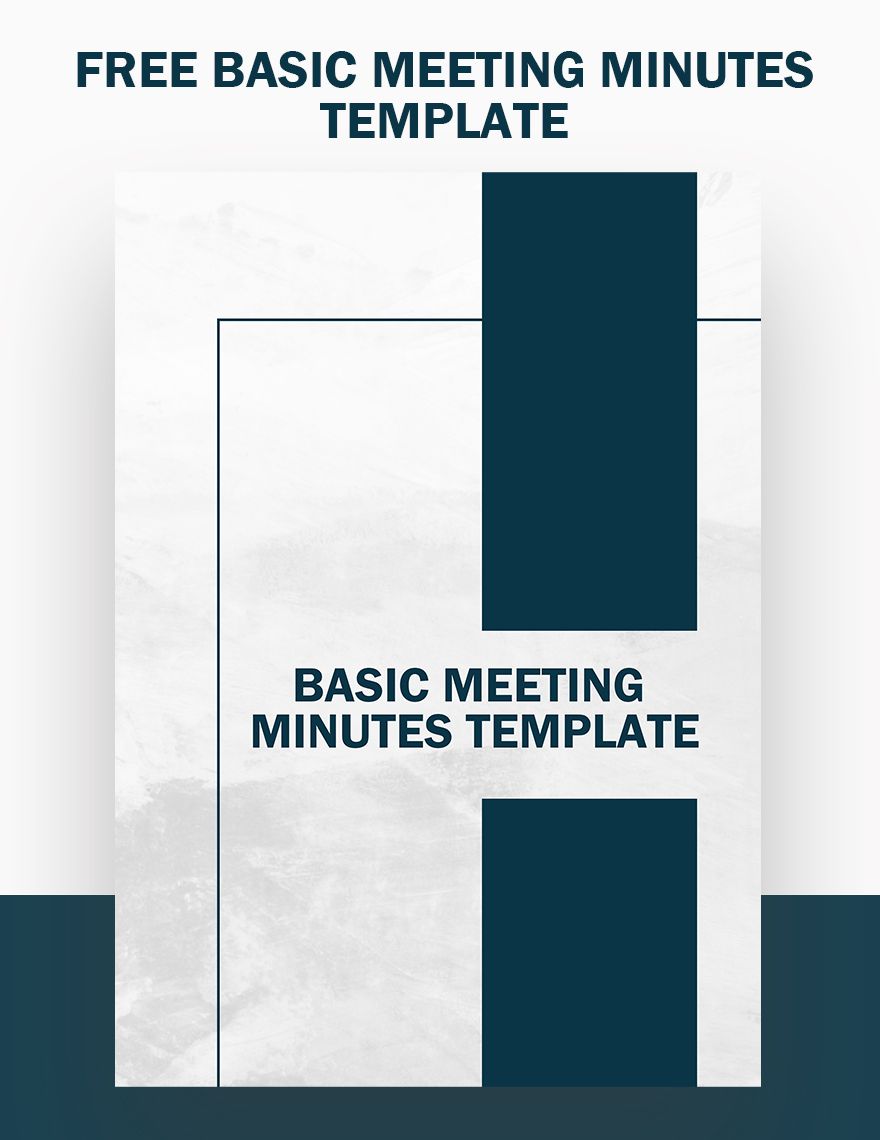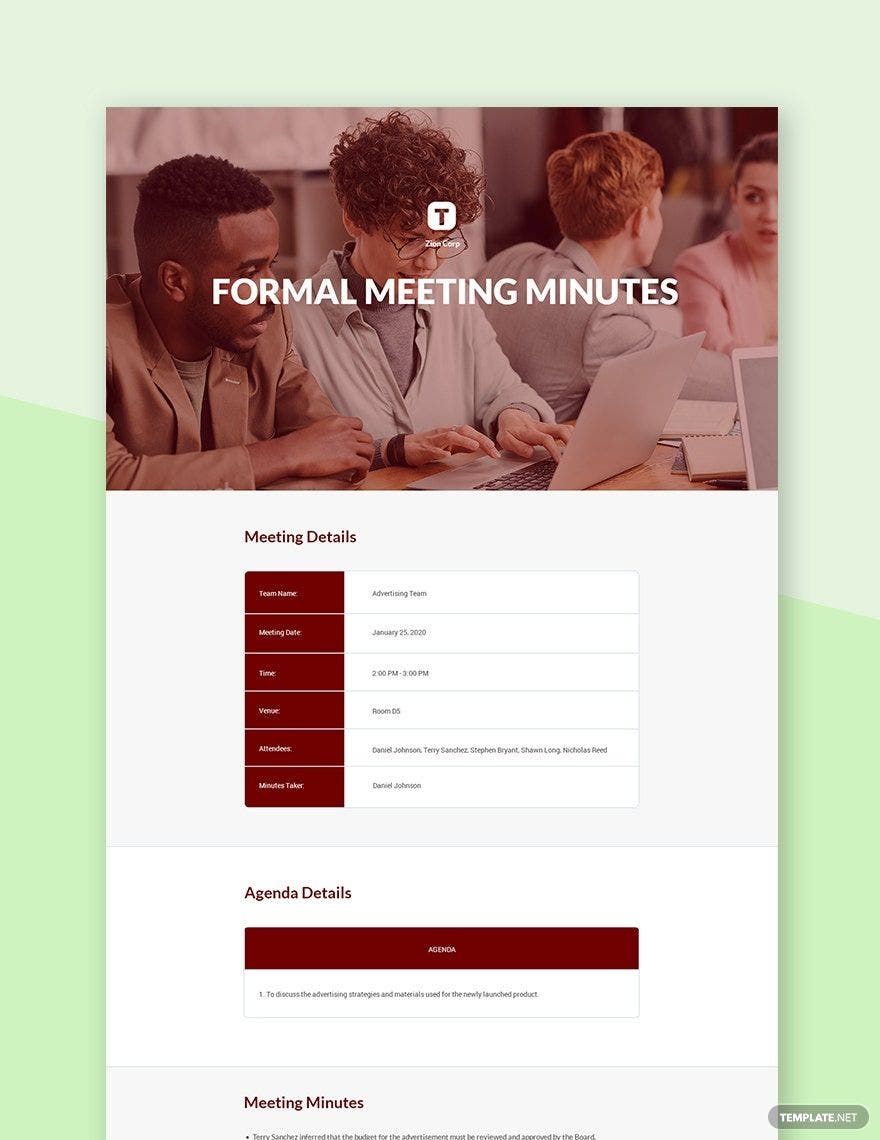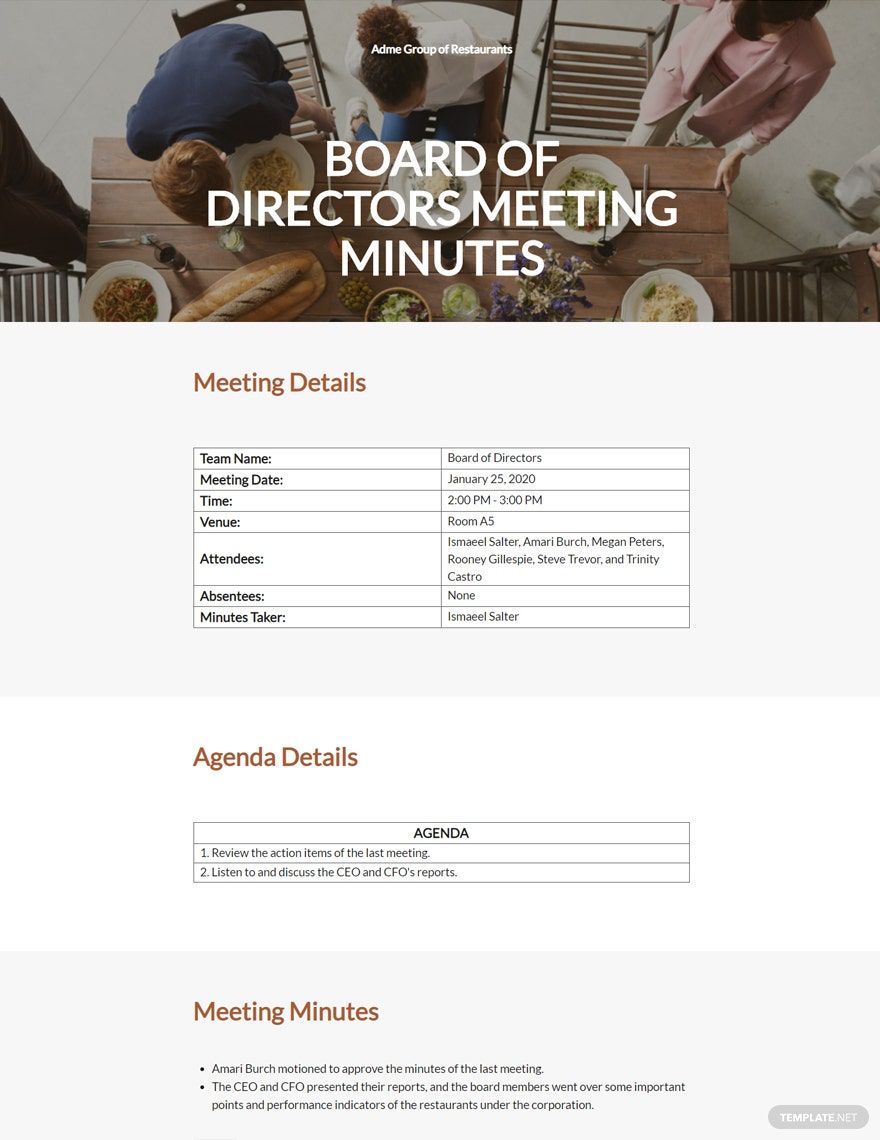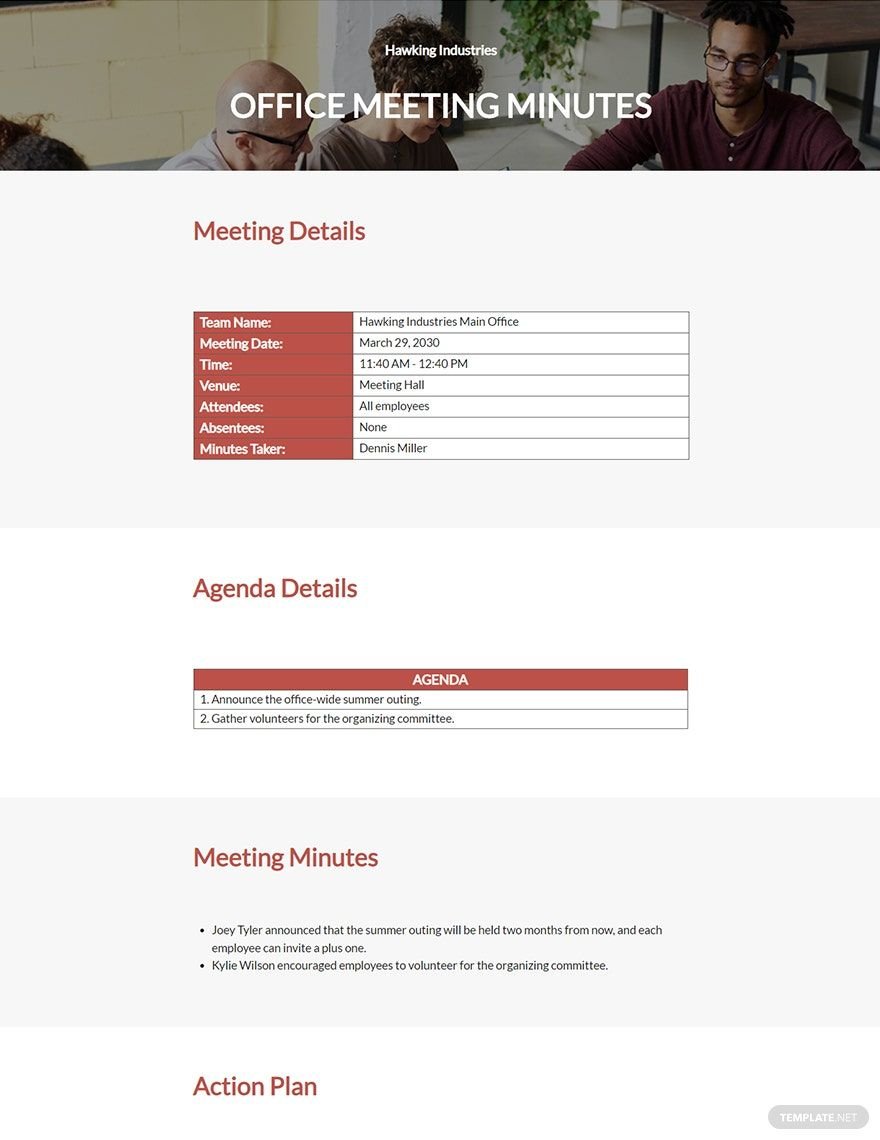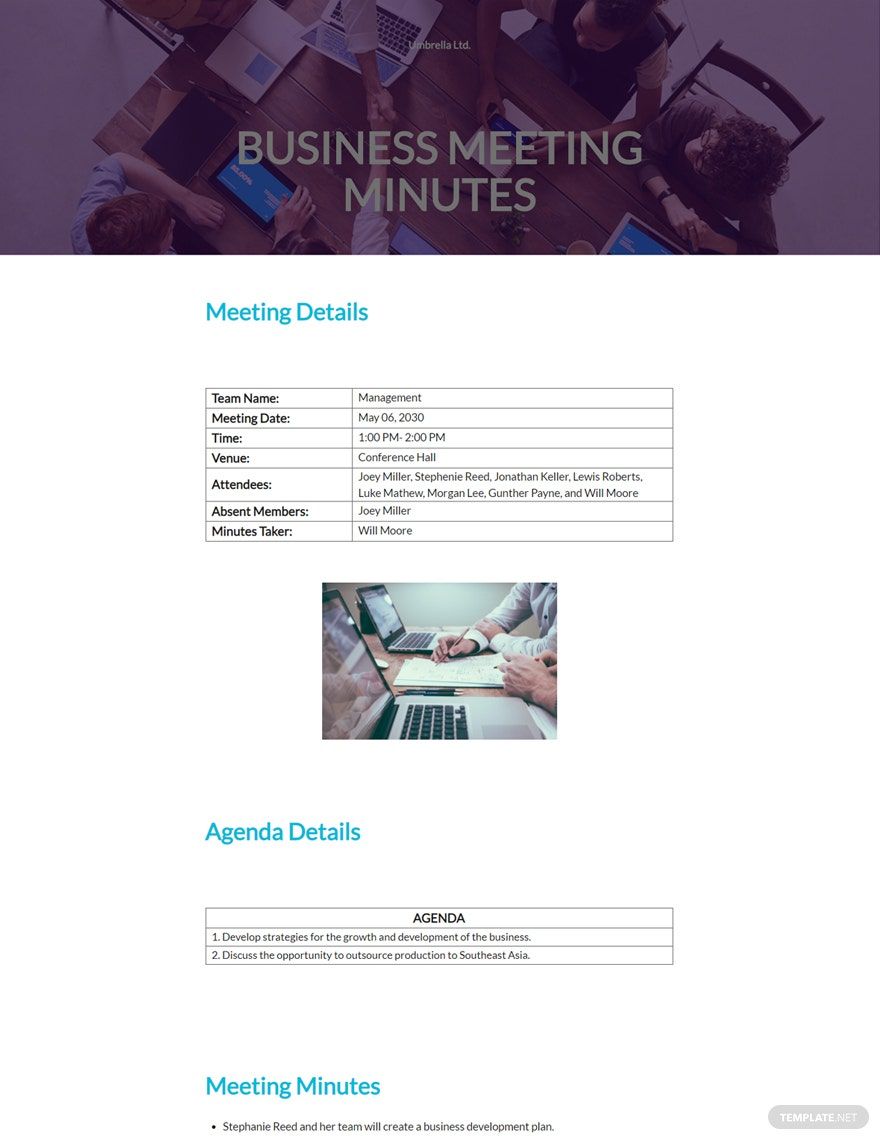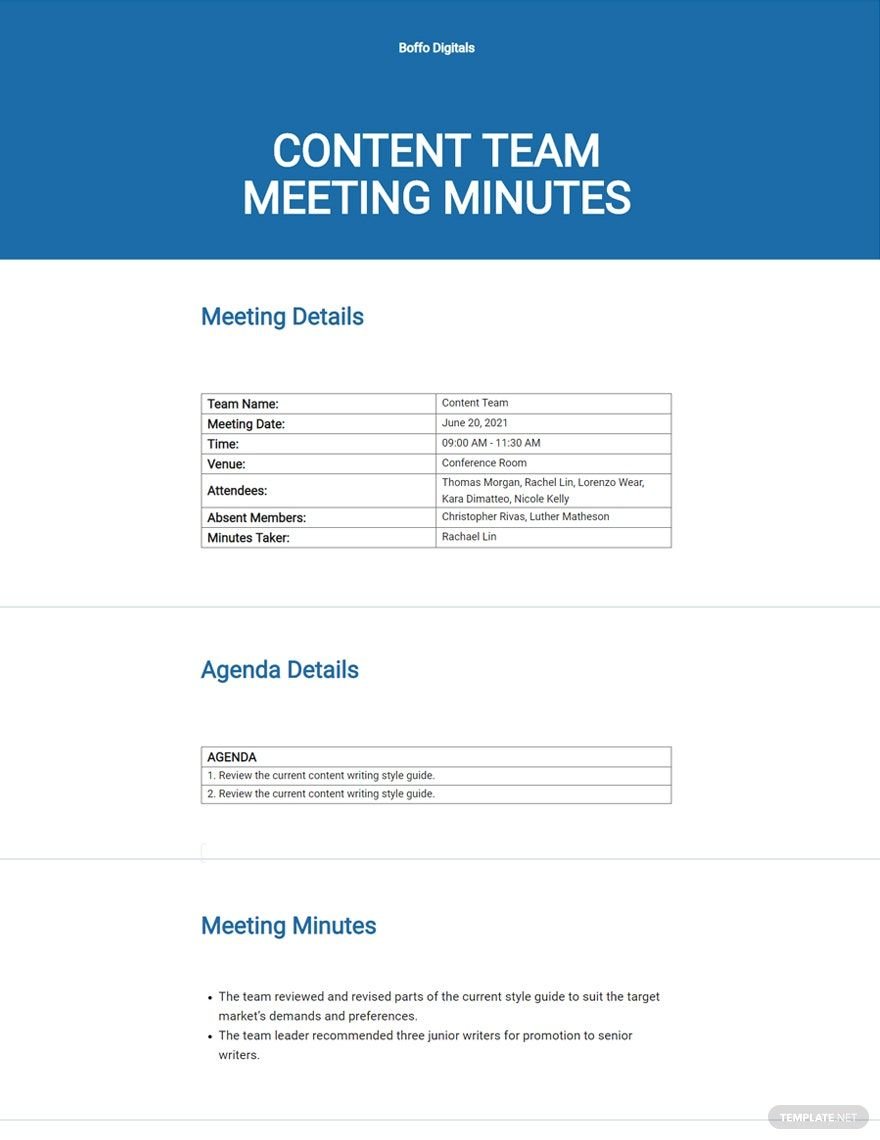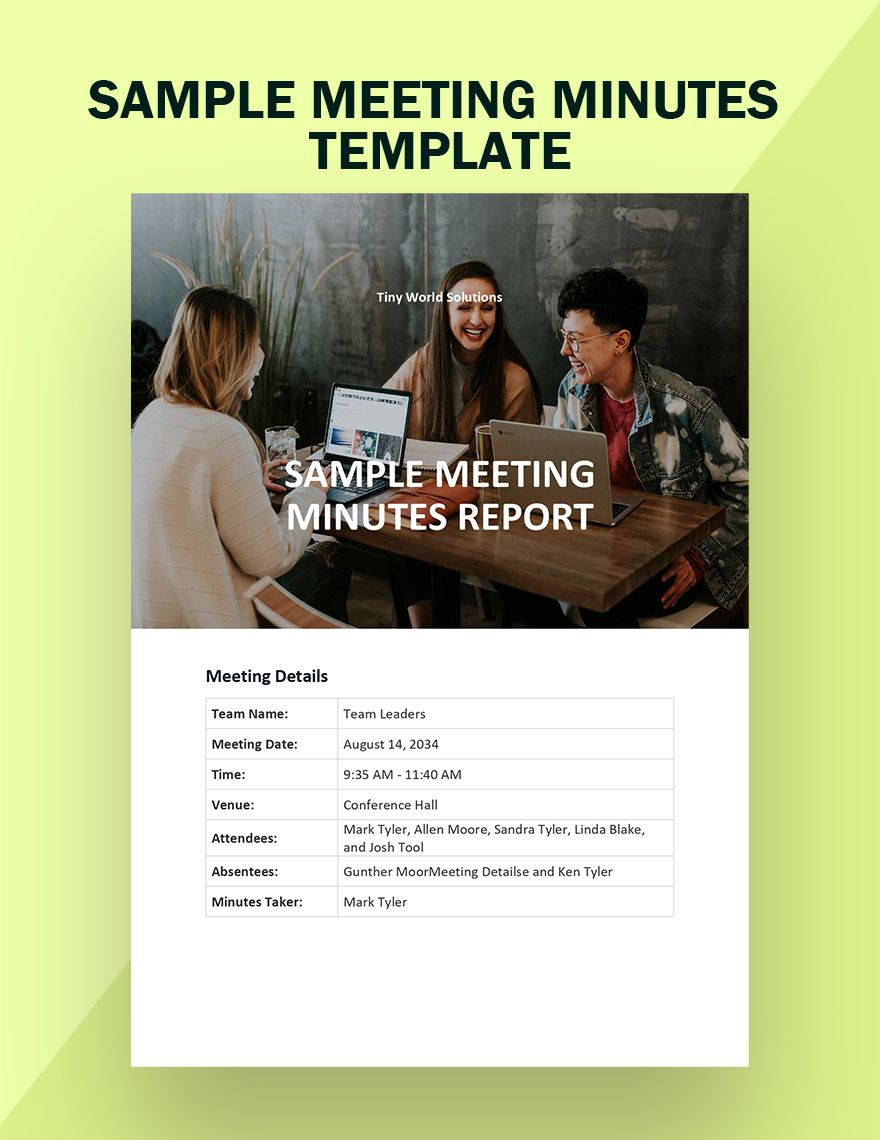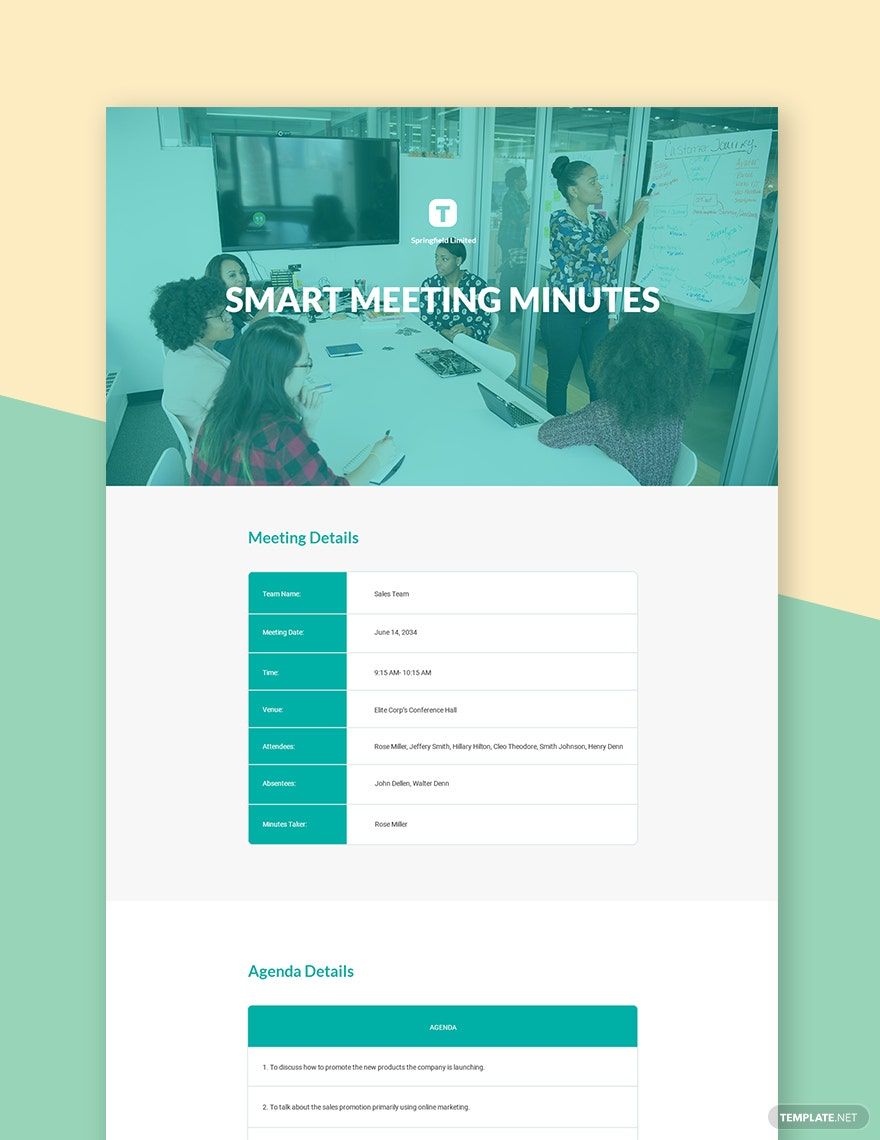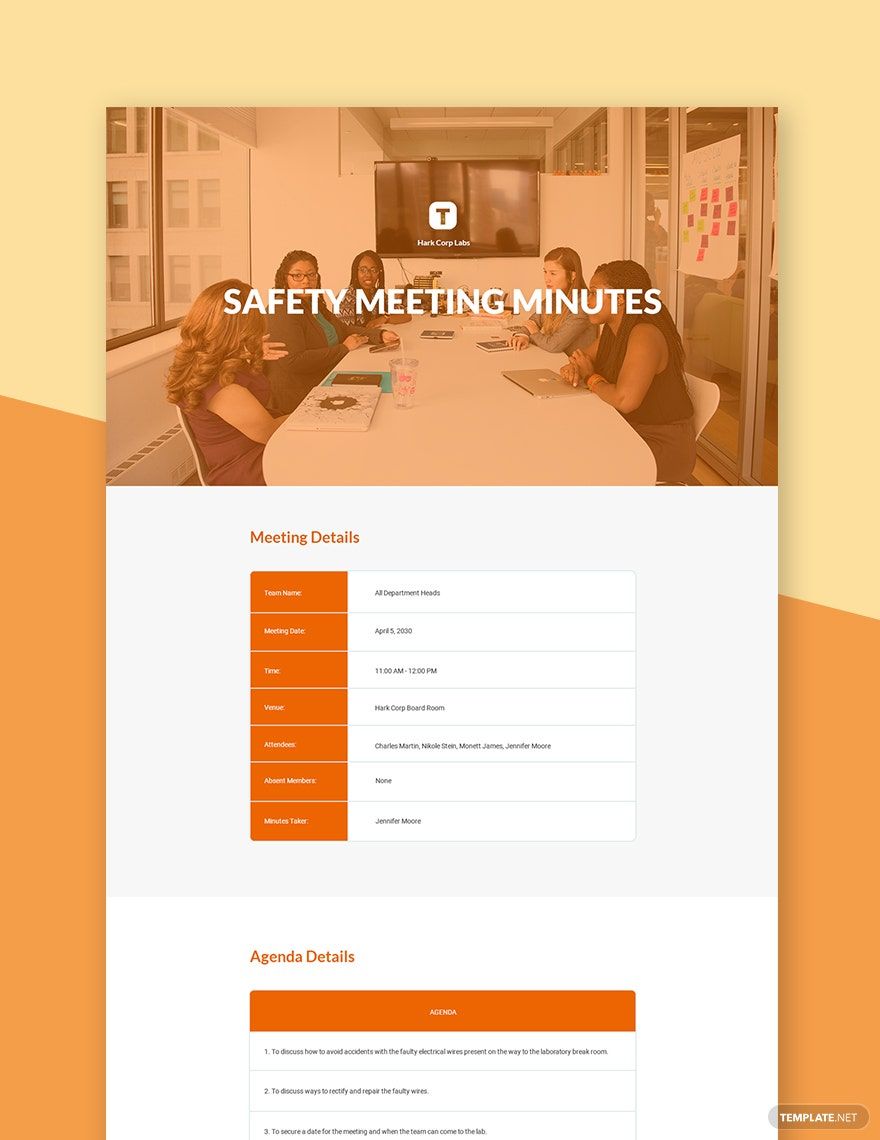Do you own a restaurant? Do you need a tool to record your meetings? Meeting minutes are used to inform people who haven't attended the meeting about what happened or to keep track of what was discussed during the meeting so they can review it and use it to make future decisions. As someone working in the restaurant business, you can now keep your notes organized with meeting minutes. We offer our easy-to-edit and print-ready Restaurant Meeting Minutes Templates, including original layouts, headings, and contents. Available for download through Apple (MAC) Pages. Get your work done faster and smarter. Subscribe now!
Restaurant Meeting Minutes Templates in Apple Pages
Explore professionally designed restaurant meeting minutes templates in Apple Pages. Free and customizable for professional results. Download now!

Get Access to All Meeting Minute Templates

How to Create Restaurant Meeting Minutes in Apple Pages
Useful meeting minutes help create an action plan for your leadership team and your employees. According to an article by AllBusiness, meeting minutes explain how executives and attendants made choices, where, why, and by whom. Minutes record meeting decisions, also making them a valuable reference tool when it comes to evaluating progress. Below are guidelines that will help you create a restaurant meeting minutes.
1. Make a List of the Attendance and Agenda
During a meeting, you must include writing down the attendants and the absentees. Note down the things on the agenda during the conference. Agenda provides control over the flow of meetings, the topics discussed, and the participants responsible for reporting specific information at the meeting to the person conducting the meeting.
2. Write Down Important Details
Take note of the relevant details included in the meeting. It would be a good practice to structure the document to take a few critical notes of a session. Generally, at the beginning meeting minutes, it is vital to write the date, time, assigned tasks, and the meeting conductor.
3. Record Main Points
Record the main points of the conference. Meeting minutes can be long and detailed, or they can be brief, depending on the nature of the meeting. Meeting minutes are also essential for future purpose, so it will be more practical to do it concisely and comprehensively.
4. Send Minutes
After all of those steps, save your document and send it to the team members for them to review the agreements and analysis performed in the conference, especially the non-attendants.
Frequently Asked Questions
What does minutes of a meeting mean?
The phrase "minutes of the meeting" doesn't mean how long the meeting lasted. The term "minutes" in this circumstance refers to the important recorded or written document which functions to inform the people about what happened during the session. This note is usually for the people who failed to attend the meeting.
What should I include in my meeting minutes?
Your meeting minutes should be able to provide you all the information about the meeting that occurred. To ensure that your minutes don't lack any detail, you should include all the critical components. These components include the names of participants, the date and time of the meeting, agenda items, main points, actions, decisions arrived by the participants, documents, and future decisions.
What is a meeting and why is it important?
Meeting refers to the gathering of three or more people to communicate on how to contribute to achieving their shared objectives. Meetings are essential, especially when there’s a problem or a big decision that the workforce should make. In a meeting, people often pitch in and develop ideas, make decisions, create solutions to problems, and to plan.
What are the advantages of a meeting?
In a meeting, different people can share their ideas on what they think is the best solution to a problem. This session would greatly help the executives in solving difficulties within the organization. Aside from this, calling a meeting in times of a crucial decision-making process could make your employees feel included.
What are the types of a meeting?
Consulting meetings, informing meetings, decision-making meetings, and problem-solving meetings are the four types of meetings. Each of these types serve different purposes. For instance, during consulting meetings, the people involved would discuss and review a particular policy or innovation. The use of informing meetings is to share factual information or important decisions that affect the people in the organization. When executives are having trouble coming up with a choice, they can call for a decision-making meeting. Problem-solving meetings, on the other hand, are for coming up with a solution to a problem.
